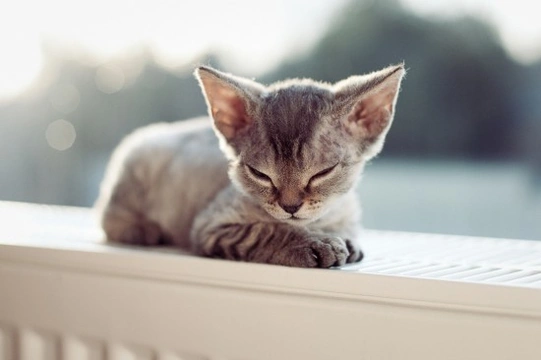
All About Rex Cat Breeds: Unique Curly-Haired Cats
The term “rex” refers to a genetic mutation causing cats to have a distinctive curly or wavy coat. This unique trait is considered desirable within certain breeds, while it remains an anomaly in others not recognising the rex coat within their breed standards.
If you're curious about what makes a rex cat, whether the various rex breeds are related, and how these breeds originated, this comprehensive guide offers detailed insights and practical care advice.
The Genetic Origin of the Curly Coat
Rex coats arise from spontaneous genetic mutations influencing hair texture. Such mutations, when selectively bred, have become signature traits within specific cat breeds. Without human intervention, these mutations would remain rare anomalies in the wild.
Distinctive Rex Coat Characteristics
Rex cats share a hallmark wavy or curly fur, often accompanied by curled whiskers. Their fur is typically soft down-hair, varying from fine and slightly wavy to tightly curled or kinked. These cats shed less than most others; however, their loose hairs tend to remain trapped in the coat, requiring regular grooming to maintain coat health and reduce shedding.
Are All Rex Cat Breeds Related?
Despite appearances, different rex breeds are not genetically related in terms of their rex mutation. Various genes cause the curly coat in each breed, meaning breeding two different rex breeds won't necessarily produce curly-coated kittens, as the mutations don't work together.
For instance, the Devon Rex and Cornish Rex originate from geographically close areas in Southwest England but carry different mutations causing their curly coats.
Main Rex Cat Breeds
Four rex breeds are internationally recognised and found in significant numbers, alongside rarer varieties.
Devon Rex
The Devon Rex, discovered in the 1960s in Devon, has a thin, curly coat. Despite early assumptions, it is genetically distinct from the Cornish Rex, a fact proven by genetic testing and breeding experiments.
Cornish Rex
Known for its ultra-soft, downy fur, the Cornish Rex originated in Cornwall in the 1950s. These cats are best kept indoors or have supervised outdoor access during colder months due to their delicate coat. Their body temperatures tend to run slightly higher, making them love warmth.
Selkirk Rex
The Selkirk Rex appeared in Montana, USA, in 1987. It is unique due to an incomplete dominant gene causing a range of curly to wavy coat textures within litters. Their soft, plush, teddy bear-like appearance and affectionate nature make them popular companions.
LaPerm
Originating in 1982 on an Oregon farm, the LaPerm features tight curls likened to a human perm. Their coats can be long or short and have a silky feel. The breed is known for its friendly, social temperament and enjoys being involved in family life.
Other Rex and Curly-Coated Breeds
Less common rex varieties include the Ural Rex, German Rex, Tennessee Rex, and Skookum. Additionally, spontaneous rex mutations occasionally occur in breeds like the Persian or Maine Coon, although such traits do not conform to breed standards and are not bred deliberately.
Care Tips for Rex Cats
Rex coats require gentle, regular grooming to remove loose hairs and maintain softness. Owners should be mindful that these cats may not tolerate cold weather as well due to their unique coat and may need a cosy indoor environment or warm clothing in winter.
Providing interactive play and affectionate attention helps keep rex cats mentally and physically stimulated, enhancing their wellbeing.
Responsible Acquisition
When seeking to find a Devon Rex kitten or any rex breed, it is crucial to select reputable breeders committed to maintaining breed health and ethical breeding practices. Responsible ownership ensures happy, healthy cats that are cherished lifelong companions.
Summary
Rex cat breeds captivate enthusiasts with their curly or wavy coats, a result of diverse genetic mutations. From the bouncy, soft curls of the Selkirk Rex to the delicate waves of the Cornish and Devon Rex, these cats offer unique appearances and vibrant personalities. Understanding their breed differences, care needs, and genetic background helps potential owners provide respectful, responsible homes.



